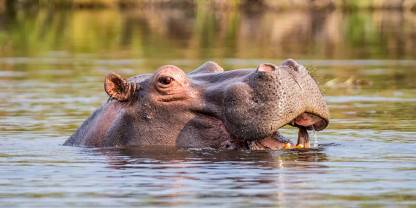Average Expert Rating
Rating Breakdown
Write a User ReviewCalm Riverside Scenery, Dotted With Tranquil Lodges
Wedged between Angola and Botswana and measuring around 500km by as little as 32km at its narrowest point, the Zambezi Region (formerly, and still often, known as the Caprivi Strip) was a classic colonial construct. The German settlers acquired it in the late 19th century, thinking it would give them access to the Zambezi and thence to East Africa. Unfortunately for them, it was of limited use, as the eastward route along the Zambezi was blocked by Victoria Falls, which lay just beyond the strip, in British territory.
Today, the Zambezi Region is rightly famous for birdwatching, which is at its best in the rainy season (November to April). I’ve heard of twitchers clocking up astonishing counts here. I’d
Read more
also recommend the region to anyone who has already visited Namibia’s famous desert attractions and likes the idea of taking in some contrasting terrain. Local guides can introduce you to village communities for an insight into the way of life in this rather remote rural region.The Zambezi Region: Wildlife’s Next Frontier
Read more
all the time, especially in Bwabwata and Nkasa Rupara National Parks, the Zambezi Region could become southern Africa’s safari destination to watch.Namibia’s Watery Wonderland
If you think Namibia is all dunes and desert, think again. The Zambezi Region (formerly Caprivi Strip) is dominated by four mighty rivers – the Okavango, the Linyanti, the Chobe and the Zambezi – that give this place its character. Part of the bartering process of the colonial Scramble for Africa in the late 19th century, it looks an odd appendage to the country, jutting out like a skinny arm into neighboring Angola, Botswana and Zambia.
And in truth, it has more in common with Botswana and Zambia, sharing much of its wildlife across their borders, including elephants, buffalo and big cats. But it was the birdlife that astounded me, particularly the seemingly thousands of carmine bee-eaters nesting in the riverbanks. Tourism here until recently was more the domain of South African self-drivers than Europeans, but when I researched the area for Bradt’s Namibia guidebook, I was astounded at the number of new and very lovely lodges in the region that work with local conservancies and are certainly attracting visitors from further afield.
An Incongruously Verdant Oasis
The Zambezi Region is a strange, thin appendage to the Namibian mainland. Compared to the arid landscapes that characterize most of Namibia, this lush, verdant region of perennial rivers and floodplains feels like an entirely different country. If you brush up on some colonial history, it actually should be.
The Zambezi Region comprises a number of pleasant and still underexplored game reserves, which boast an astonishing diversity of wildlife and birdlife, including a number of rare species, though densities of the bigger game don’t compare to the likes of Etosha, with the exception of elephants. This is one of few areas in Namibia you are likely to spot the critically endangered African wild dog.
The Zambezi Region also has some spectacular, secluded riverside eco lodges and camps. My personal favorite is the quirky and bohemian Ngepi Camp, where I enjoyed a sunset mokoro (dugout canoe) trip along the languid Okavango River, while my guide regaled me with tales of the various close scrapes he’d had with the local hippo population.

